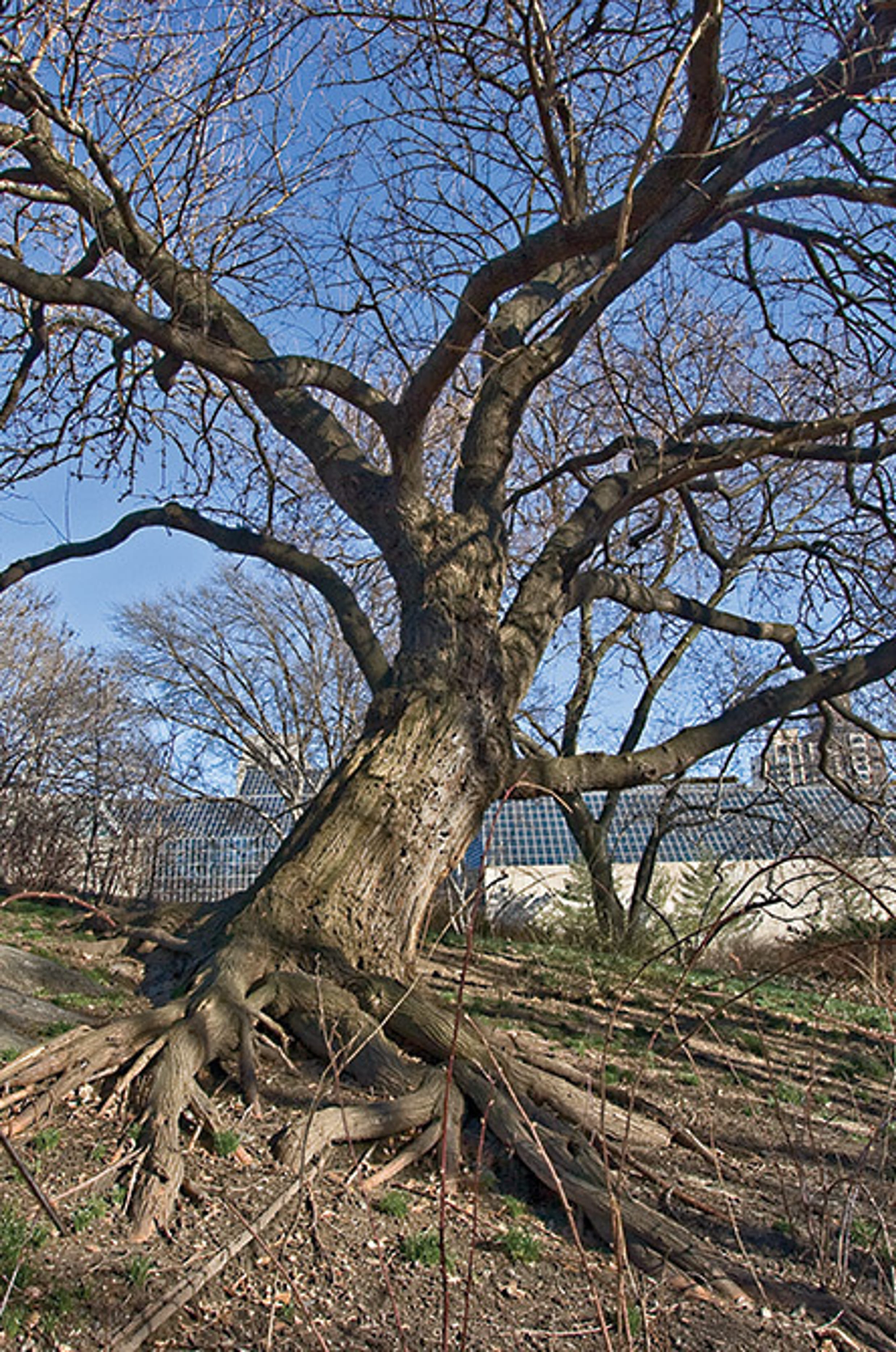White Mulberry

White mulberry was imported to the United States from Asia as a food source for silkworms; ultimately it became a favored food of many birds who help the tree spread quickly through seeds dispersed in their droppings. Many of New York City's white mulberries can be traced to a large shipment imported to Flushing by the plantsman William Prince in 1774. He imported the trees in an effort to establish a silk industry in New York. The white mulberry has invasive tendencies and hybridizes easily with the native red mulberry, endangering the continued existence of the native species.
-

Leaves
Alternate arrangement that can be lobed or not; sharp, saw-like edges; rounded, heart-shaped base; pubescent leaf has rough texture; dark green -

Fruit
Numerous small fleshy stone fruit; white, pink, red, and purple; edible -

Flower
Up to 1 inch long, fleshy-white to red stone fruit, bloom June to July -

Bark
Light tannish-brown, stems yellowish brown, white substance when stem broken







